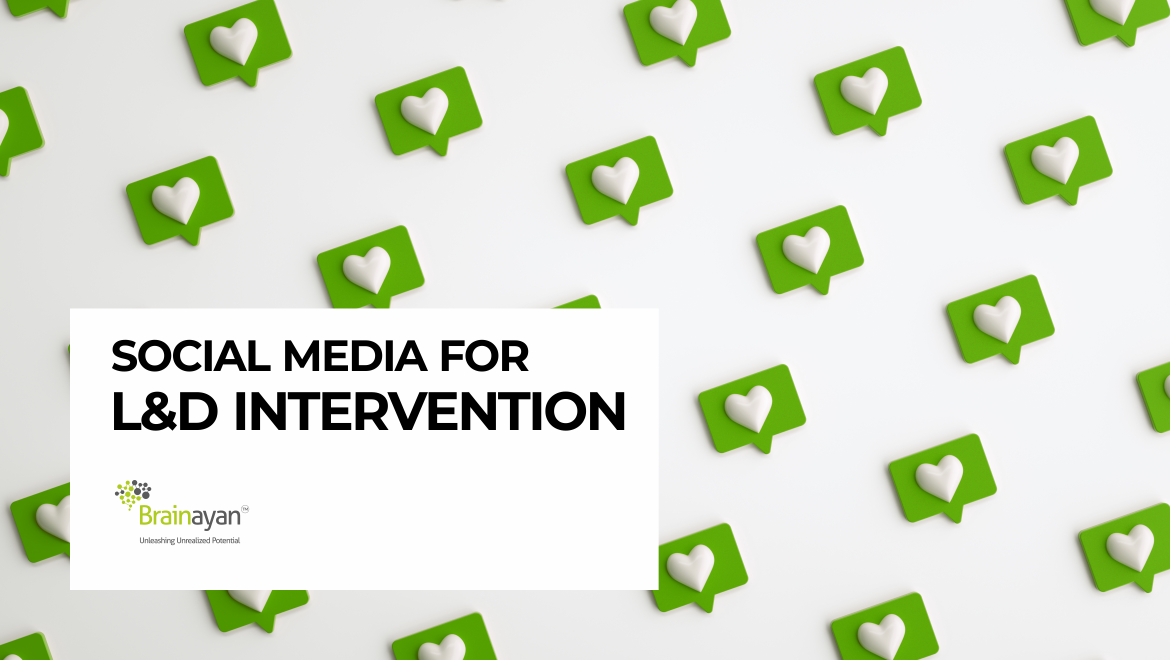The field of Learning and Development (L&D) is intricately connected with both human capabilities and technological advancements. As technology continues to progress and human behavior evolves in tandem, it becomes imperative for L&D professionals to consistently adapt and incorporate these technological innovations seamlessly.
There is a growing body of literature indicating that social media is receiving increasing attention in the academic world. It is now acknowledged as a valuable tool for facilitating knowledge acquisition and learning.
In organizational contexts, social learning is rapidly becoming a favored approach learning and development for various reasons. Organizations are realizing the benefits of leveraging social media platforms to encourage collaboration, foster peer learning, and enhance employee engagement in the L&D interventions (Naim, 2014). Along with fostering stronger interpersonal relationships among participants, it also cultivates a sense of belongingness and psychological attachment to the intervention (Niam, 2014). In 5 years, the workforce will be flooded with Gen Zers. Between them, millennials and Gen Zers are going to dominate the workforce and both these generations are extremely tech savvy with the Gen Z being the native digital generation. For this, leveraging social media as a learning platform will be a good tool. Moreover, Byte size learning has been an ask of L&D for a long time. The newer generations having brought up on reels, will create a conducive environment for byte sized learning to thrive. Additionally, not only can the learning content be gamified easily, but it also allows learning on the go in the existing fast-paced environment. To achieve these outcomes, platforms such as Instagram, Facebook, LinkedIn, Twitter, Wiki, blogs, discussion forums, and peer learning groups are commonly used.
Social media, a dynamic form of on-demand social learning, thrives on its unique many-to-many communication model. However, it’s crucial to channel it effectively, as utilizing social media for enhancing interventions can easily be perceived as a mere publicity stunt. Furthermore, it has the potential to divert participants’ attention from the intended learning objectives. Therefore, as L&D professionals, we must exercise great care in curating the learning material we expose participants to via social media. Think of us as facilitators who curate captivating “learning playlists” by skilfully combining internal and external information sources. Formal social media learning could be done through integration of social networking tools and applications to any training programs.
Social learning can occur naturally in social interactions and is reinforced with intentional facilitation and guidance. Here are some ways to incorporate social media in L&D interventions:
- Assess the organisation’s learning culture to determine your social media tool appropriately. (Rezaei, 2018)
- Fostering relationship building and peer collaboration among the participants by conducting quizzes, case studies, reels, and polls. (Dalton and Pamela, 2013)
- Reducing the corporate hierarchy (Rezaei, 2018) by providing a platform for exchanging knowledge socially by encouraging participants and organisational leaders to share their learnings and experiences on the social media platform.
- Sharing relevant and quality content like articles, videos, memes, infographics, images, and so on.
- Acknowledging, rewarding, recognizing active participation of the participants on the social media channel
- Drive engagement by trying to present information in different formats appropriate for social media.

